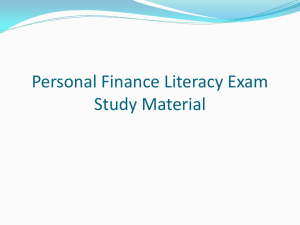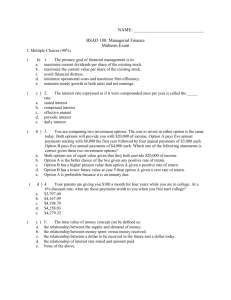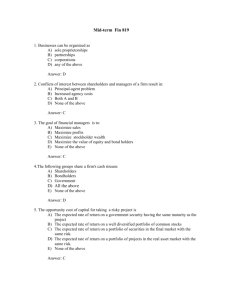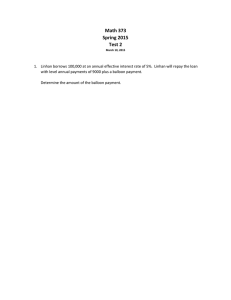Fall 2012 Problem Set 1 - University of Guelph Exam Network
advertisement
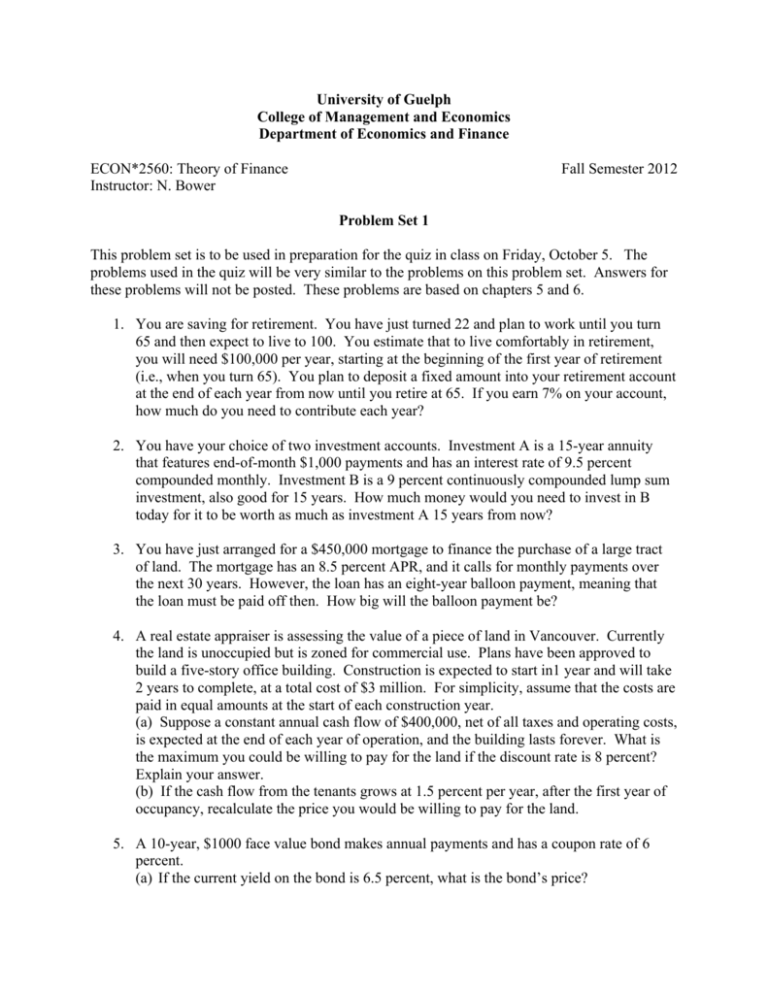
University of Guelph College of Management and Economics Department of Economics and Finance ECON*2560: Theory of Finance Instructor: N. Bower Fall Semester 2012 Problem Set 1 This problem set is to be used in preparation for the quiz in class on Friday, October 5. The problems used in the quiz will be very similar to the problems on this problem set. Answers for these problems will not be posted. These problems are based on chapters 5 and 6. 1. You are saving for retirement. You have just turned 22 and plan to work until you turn 65 and then expect to live to 100. You estimate that to live comfortably in retirement, you will need $100,000 per year, starting at the beginning of the first year of retirement (i.e., when you turn 65). You plan to deposit a fixed amount into your retirement account at the end of each year from now until you retire at 65. If you earn 7% on your account, how much do you need to contribute each year? 2. You have your choice of two investment accounts. Investment A is a 15-year annuity that features end-of-month $1,000 payments and has an interest rate of 9.5 percent compounded monthly. Investment B is a 9 percent continuously compounded lump sum investment, also good for 15 years. How much money would you need to invest in B today for it to be worth as much as investment A 15 years from now? 3. You have just arranged for a $450,000 mortgage to finance the purchase of a large tract of land. The mortgage has an 8.5 percent APR, and it calls for monthly payments over the next 30 years. However, the loan has an eight-year balloon payment, meaning that the loan must be paid off then. How big will the balloon payment be? 4. A real estate appraiser is assessing the value of a piece of land in Vancouver. Currently the land is unoccupied but is zoned for commercial use. Plans have been approved to build a five-story office building. Construction is expected to start in1 year and will take 2 years to complete, at a total cost of $3 million. For simplicity, assume that the costs are paid in equal amounts at the start of each construction year. (a) Suppose a constant annual cash flow of $400,000, net of all taxes and operating costs, is expected at the end of each year of operation, and the building lasts forever. What is the maximum you could be willing to pay for the land if the discount rate is 8 percent? Explain your answer. (b) If the cash flow from the tenants grows at 1.5 percent per year, after the first year of occupancy, recalculate the price you would be willing to pay for the land. 5. A 10-year, $1000 face value bond makes annual payments and has a coupon rate of 6 percent. (a) If the current yield on the bond is 6.5 percent, what is the bond’s price? (b) Suppose that a year from now the bond sells at a yield to maturity of 7 percent. What is the price of the bond? (c) What is your rate of return if you purchase the bond at the price in (a), hold it for a year, and then sell it for the price in (b)? 6. (a) Calculate the price of a 6-year, $1,000 par value bond that makes semi-annual payments, has a coupon rate of 8 percent, and offers a yield to maturity of 7 percent. (b) What is the current yield on the bond? (c) What would the price have to be a year from now for you to earn a 6% return by purchasing the bond today and selling it in a year? For this part, treat the bond as having annual coupon payments.






